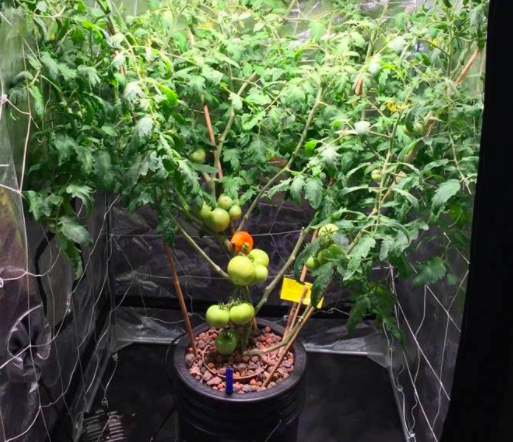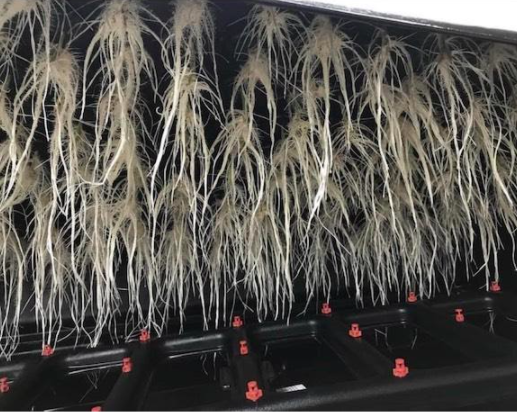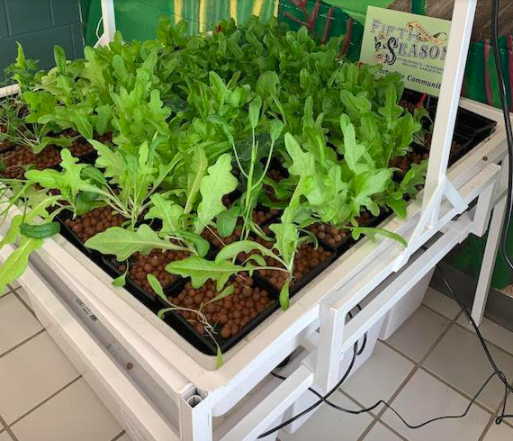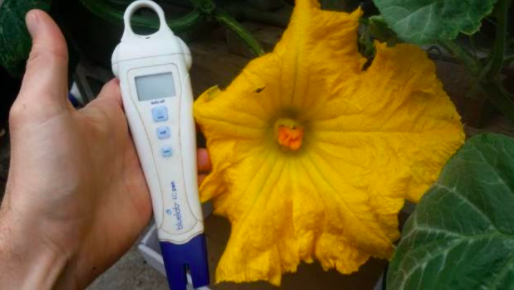
-James Gordon-
Good day all, and welcome to this week’s blog! Today we are going to tackle the basic principles of hydroponic growing. First, we’ll go over some of the common hydro systems. Then we’ll introduce the basic necessities your system of choice will use. So let’s keep an open mind, maybe take some notes, and hopefully this will be a good tool to reference as you start growing hydroponically.
So first things first. What is Hydroponics? Hydroponics is the act of growing plants without the use of soil. When growing plants in soil, water serves to make nutrients in the soil soluble and able to be taken up by plant roots, and also provides oxygenation for the plant’s roots. In hydroponics, however, the nutrients are instead made available to roots directly in the water. Some inert substrates and several irrigation applications help apply the nutrients being carried in the water to your plants’ roots. This is achieved through hand watering, irrigation, or a hybrid method. Now that’s easy enough. Next let’s look at a few systems that we may want to put together.

Deep Water Culture (DWC): This is a very popular and easy-to-assemble method that can go in a few directions. There is a static method where you use no pumps (a self-contained method), and then a recirculating one that connects a series of self-contained buckets to a control system. Plant roots grow down into a reservoir of water/nutrients that is usually oxygenated with an air stone and air pump.

Aeroponics: It can be similar to DWC in that your system can be set up as individual large buckets and totes. The major difference is that with this method we use sprayers inside our buckets, rather than having roots growing down into a reservoir of water/nutrients. I really like this method personally because I have had great success using it, especially when cloning. Aeroponics has become the preferred cloning method for many in agricultural sectors that grow hydroponically. The most popular system to buy for aeroponic cloning is the E-Z Clone system.

Ebb and Flow: Also known as “Flood and Drain”, this is probably the most simple and cost-effective way to approach hydroponics in my personal opinion. As its names imply, this method involves alternately flooding and draining a container (usually a growing tray) in which your potted plants are resting. A pump takes water/nutrients from one container (reservoir) to another (growing tray), typically placed above it. The tray gets “flooded” for a period of time, and then you shut the pump off, which drains the water back to the original reservoir. The flooding and draining that occurs throughout the day is usually regulated by timers, so the flooding and draining process becomes easy and automatic. All trays/reservoirs, pumps, and fittings can be found in store or on our website.
Run to Waste/Drain to Waste: With this method, you use emitters to directly apply feeding solution to the top of medium/substrate and let the feeding drain out bottom through plumbing. So you dispense the water/nutrient solution on top, and let it run it out the bottom into the drain without reusing it. I personally have found that this is the cadillac of growing methods. You can have fresh, untapped solutions feeding on a consistent time schedule. The plants really respond to this application! The illustration depicts another way in which you can save and reuse your nutrient solution. Either way works! I just prefer draining out solution and applying a fresh feed to it each feeding.
Now there are many more ways to skin the proverbial cat when it comes to hydroponics. All can work! Some will work better with certain plants, whereas some just work with all. We definitely can help assist you on your hydroponic journey and see which one best suits your particular needs.
Moving to the next part of Hydro, we come to the quality of the water we use to transport nutrients to our plants. One would think oh let’s go to the sink and get some water for my plants. STOP! Sink water has all sorts of chemicals that do not have an opportunity to off-gas until they are released from the faucet itself. So if you are using tap water, I highly encourage you to let it sit for 24-48 hours before you use it on any plants. This gives the chlorine and other chemicals time to dissipate out of your water.
You can also purchase a Reverse Osmosis filter that will clean all the water coming out of the tap for you. This filter and its replacement filters are key in a successful garden in my opinion.

So now you have clean water, but you also need to have the correct pH level for your water, just like a fish tank, pool, or pond needs. Plants have specific pH ranges they need their water to be within, or they will not be able to take up nutrients from the water, even if the water is packed with nutrients.
Using test indicators or digital meters, you can pretty simply determine your water’s pH. From here you can use pH up or down solutions to control and manipulate the water to the desired pH level. pH should always be tested AFTER adding your feeding nutrients and supplements, as they can change the pH level of your solution.

So now you have to decide in what kind of medium/substrate do you want your plants to grow in the selected system. Each system differs in what medium is best. Many media can be applied to almost all applications. Rockwool, perlite, vermiculite, coco coir, hydroton, and pumice are a few such media you can use for a plant’s root mass to be housed in. We can walk you through which media are best for your specific applications and growing methods.
I hope this has helped you and been informative. If you have any further questions please do not hesitate to call or come by the shop. We offer all the growing needs discussed in this blog. I am James and it’s been a pleasure talking Hydroponics with you! Good luck and plan before you plant, cheers!

Livio Dias says
Hi,
Very interesting write-up on Hydroponics. I love Hydroponics and am very interested in learning this and trying this at home. Am based in London, UK. Assume you are based in US. Are there any books you can suggest which can give me step by step instructions on how to set up different types of Hydroponics systems.
Thanks,
Livio
Mokhine says
Good day, I am residing in Pretoria, South Africa. I am very interested on this Hydroponics but don’t know where to begin.
Is the a courses that I can do or books that I can buy for step by step info.
ashley says
Hi Jacob, There are a lot of very good hydroponics YouTube videos that you can search for and watch. You can also read through our hydroponics-themed blogs for info on particular aspects of growing hydroponically.